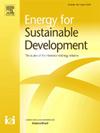Towards sustainable maritime transport: Focus on the early phase of technology development related to alternative fuels
IF 4.9
2区 工程技术
Q2 ENERGY & FUELS
引用次数: 0
Abstract
Transition towards sustainable maritime transport and the move away from fossil fuels is one of the greatest challenges faced by this industry today. This paper aims to evaluate technological advances in alternative fuels and energy sources-related technologies in maritime transport. Data from patent databases was analysed to assess that research issue. A comparative analysis of ten types of alternative fuels/energy sources in maritime transport was conducted in the context of technology potential and technology S-curve. Identifying the current status of technological knowledge is necessary for planning and conducting an effective research policy. The results show that the patent-based maturity rate of alternative maritime fuels/energy sources varies between 26.4 % and 91.7 % of the saturation level of current invention curves fitted separately for each fuel type using a logistic curve model. Biofuels, wind, and LNG are characterised by the highest patent-based maturity rates. In accordance with the concept of successive S-curves in technology development, wind and biofuels-based technologies in particular can be expected to change their shape of the invention curve. Among zero-emission fuels, technologies based on methanol, ammonia, battery, and hydrogen require further urgent intensive research work. Achieving the right level of technology maturity for all alternative fuels is essential for business entities to decide freely about choosing the best ones for investments in the maritime industry.
迈向可持续的海上运输:重点关注与替代燃料相关的早期技术开发
向可持续海上运输过渡和远离化石燃料是当今该行业面临的最大挑战之一。本文旨在评估海上运输中替代燃料和能源相关技术的技术进步。他们分析了来自专利数据库的数据,以评估这一研究问题。在技术潜力和技术s曲线的背景下,对十种替代燃料/能源在海上运输中的应用进行了比较分析。确定技术知识的现状对于规划和实施有效的研究政策是必要的。结果表明,海洋替代燃料/能源的专利成熟度在当前发明曲线饱和水平的26.4%至91.7%之间变化,使用logistic曲线模型对每种燃料类型分别拟合。生物燃料、风能和液化天然气的特点是基于专利的成熟度最高。根据技术发展中连续s曲线的概念,特别是基于风能和生物燃料的技术,可以预期将改变其发明曲线的形状。在零排放燃料中,基于甲醇、氨、电池和氢的技术需要进一步迫切深入的研究工作。实现所有替代燃料的适当技术成熟度对于商业实体自由决定为海运业投资选择最佳燃料至关重要。
本文章由计算机程序翻译,如有差异,请以英文原文为准。
求助全文
约1分钟内获得全文
求助全文
来源期刊

Energy for Sustainable Development
ENERGY & FUELS-ENERGY & FUELS
CiteScore
8.10
自引率
9.10%
发文量
187
审稿时长
6-12 weeks
期刊介绍:
Published on behalf of the International Energy Initiative, Energy for Sustainable Development is the journal for decision makers, managers, consultants, policy makers, planners and researchers in both government and non-government organizations. It publishes original research and reviews about energy in developing countries, sustainable development, energy resources, technologies, policies and interactions.
 求助内容:
求助内容: 应助结果提醒方式:
应助结果提醒方式:


